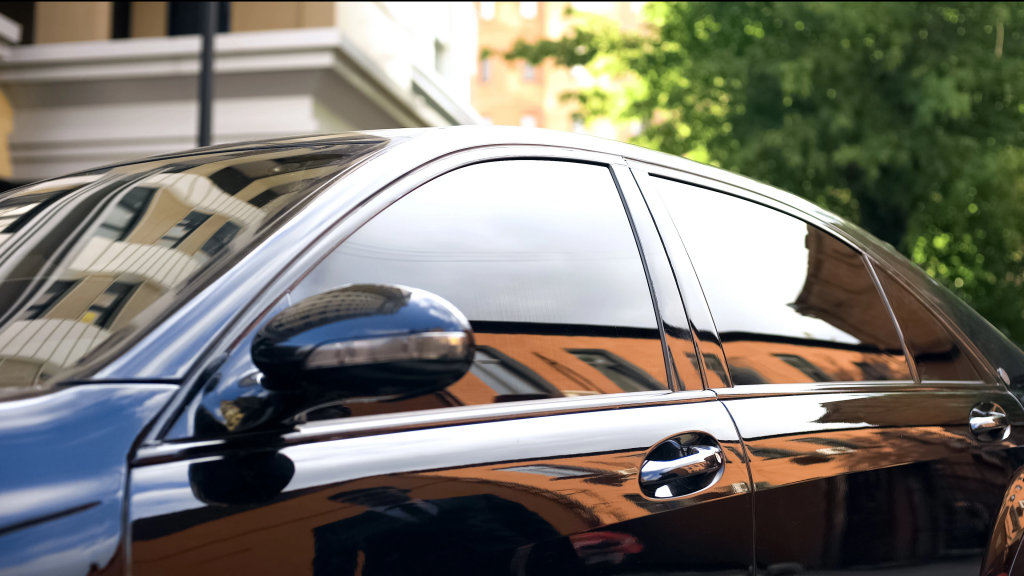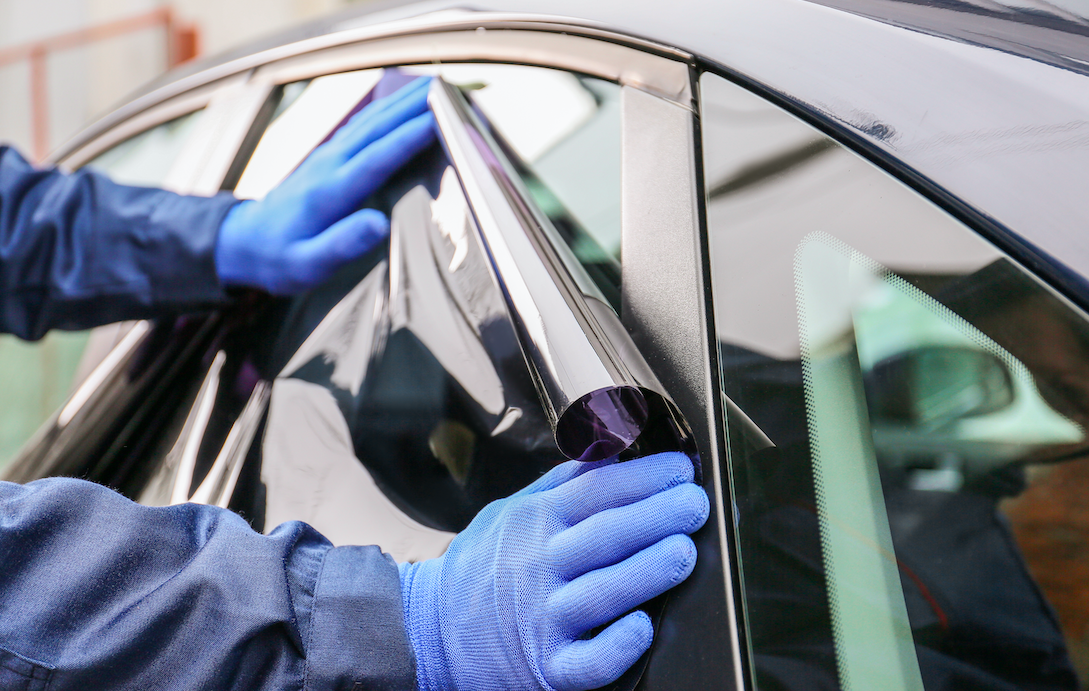Everything You Required to Find Out About Car Home Window Tinting for Your Automobile
Auto home window tinting is a sensible enhancement for many automobile proprietors. It offers advantages such as enhanced convenience and energy efficiency. Different tint movies accommodate various needs and preferences. Nonetheless, comprehending legal laws and choosing the ideal color percentage is crucial. The installation procedure and correct maintenance additionally play significant functions in making certain the longevity of the tint. What other aspects should one consider before choosing on home window tinting?
Benefits of Automobile Home Window Tinting
Some lorry proprietors might overlook it, vehicle window tinting offers countless benefits that improve both the driving experience and the lorry's durability. One of the main benefits is the decrease of warmth build-up inside the vehicle, permitting for a more comfortable experience, particularly throughout warm weather. This can result in decreased reliance on cooling, improving fuel efficiency.Additionally, window tinting supplies security versus harmful UV rays, which can trigger skin damages and discolor indoor products gradually. By blocking these rays, the tint helps preserve the vehicle's inside and keep its resale value.Moreover, colored home windows can boost personal privacy and protection, as they make it more tough for outsiders to see inside the automobile. This added layer of protection can deter prospective theft. In general, car window tinting acts as a practical financial investment that adds to the lorry and both convenience's general well-being.
Kinds of Home Window Color Films
When thinking about car window tinting, lorry owners run into a range of home window tint movies, each created to satisfy specific demands and choices. The first classification is dyed home window film, which gives a fundamental level of personal privacy and UV security while being cost-effective. Next off, metalized movies include small metal bits, mirroring warm and enhancing durability, although they might interfere with digital signals.Ceramic movies are one more option, understood for their exceptional heat being rejected and clarity, offering high performance without signal disturbance. Lastly, crossbreed movies integrate characteristics of dyed and metalized films, striking an equilibrium between price and functionality. Each kind of window tint film provides unique benefits, enabling vehicle owners to choose based upon their specific requirements, such as warm budget plan, control, and look factors to consider. Understanding these choices is important for making a notified decision concerning auto home window tinting.
Comprehending Lawful Regulations
When thinking about automobile home window tinting, it is essential to comprehend the legal guidelines that control tint darkness limits and windscreen tint needs. These regulations can vary substantially from state to state, affecting what is acceptable for automobile proprietors. Acquainting oneself with these regulations guarantees conformity and aids prevent prospective penalties or charges.
Tint Darkness Restrictions
Exactly how can automobile owners assure they remain certified with neighborhood legislations regarding window tinting? Understanding color darkness limits is vital. Each state has certain guidelines that dictate the acceptable degrees of darkness for home window tints, which are measured by Visible Light Transmission (VLT) percentages. Commonly, front-side home windows should permit a higher percentage of light contrasted to back windows. For example, some states may permit only 30% VLT for front home windows, while the back windows could be allowed to have significantly darker colors. To ensure conformity, car proprietors ought to speak with state guidelines or neighborhood police for precise information. In addition, accredited tinting professionals can supply insights concerning lawful restrictions, ensuring that automobile owners make notified choices.
Windscreen Tint Regulations

State-Specific Regulations
Steering with the landscape of state-specific laws pertaining to automobile home window tinting requires careful interest to detail, as regulations can differ substantially from one state to an additional. Each state has its own collection of guidelines controling allowed color percentages, sorts of materials, and positioning on automobile home windows. Some states permit darker tints on rear home windows while prohibiting them on front windows, while others have stricter general restrictions (automotive window tinting clinton township). In addition, specific states mandate making use of details materials or require qualification from installers. Failing to follow these laws can cause penalties or the requirement to eliminate non-compliant color. Consequently, vehicle owners should consult their state's Division of Motor Vehicles or relevant authority to assure adherence to neighborhood legislations
Picking the Right Color Portion
When selecting the right color portion for a vehicle's home windows, one need to think about various variables that influence see this both aesthetic appeals and functionality. Tint percentages commonly vary from 5% to 70%, with lower percents supplying darker shades and greater portions permitting much more light in. A darker tint can improve privacy and decrease glow, while a lighter tint can maintain presence and follow lawful restrictions.Furthermore, personal choice plays a significant role in this choice. Some individuals may prefer the smooth look of darker tints, while others could favor a more open, airy feeling. In addition, the automobile's function must be taken into account; as an example, those utilizing their automobiles for commercial functions could choose lighter colors to maintain a specialist look.Ultimately, the best tint percentage equilibriums individual style, convenience, and adherence to local laws, making sure a rewarding tinting experience.
The Setup Refine
A successful installation of window tint needs mindful focus to information and the right devices. The procedure usually begins with detailed cleaning of the windows to remove dust, dirt, and particles, assuring correct attachment of the movie. When the surfaces are prepared, the installer steps and cuts the tint movie to fit each home window accurately.Next, the movie is positioned on the glass, commonly utilizing an option to assist in simple adjustment and prevent air bubbles. Heat is often put on the film to adhere it to the home window's curves, enhancing its appearance and long life. After confirming a smooth fit, the installer diligently cuts any type of excess film along the edges.Finally, the installer look for flaws and verifies all sides are safe. This careful approach is essential not only for visual appeals but additionally for accomplishing the wanted efficiency benefits of home window tinting, such as UV security and heat decrease.
Maintenance and Take Care Of Tinted Windows
Appropriate upkeep and treatment are important for preserving the integrity of tinted home windows. Efficient cleansing techniques, the Continued evasion of damaging chemicals, and normal assessments for damages play crucial roles in making sure longevity. By following these guidelines, automobile proprietors can preserve the visual and functional benefits of their home window tint.
Cleaning Up Techniques for Tint
Keeping the clarity and durability of colored home windows requires details cleaning methods customized to the film's delicate surface area. It is necessary to use a soft microfiber fabric to stay clear of damaging the color while cleaning. A mild service of water and a couple of drops of moderate meal soap can properly remove dust and gunk. It is recommended to apply the cleansing service to the cloth, rather than directly onto the tinted surface area, to avoid dampness from permeating into the edges of the film. Gentle, circular movements must be utilized to cleanse the home windows completely. Normal cleaning assists preserve presence and stops buildup, guaranteeing that the color continues to be in prime problem with time. Adhering to these strategies will extend the life of tinted home windows.
Staying Clear Of Dangerous Chemicals
Several household cleansing products are efficient on different surface areas, they can posture substantial threats to tinted windows. Chemicals such as ammonia, bleach, and certain solvents can break down the tint film, resulting in discoloration and peeling. Individuals need to select pH-balanced cleansers especially made for colored windows. Additionally, using soft microfiber towels will assist avoid scratches and maintain the color's stability. Routine maintenance is essential; subsequently, preventing rough scrubbing or abrasive materials is important. It is advisable to check out product labels carefully to verify compatibility with home window tints. By selecting the ideal cleaning remedies and tools, lorry owners can protect the appearance and capability of their tinted home windows, ensuring a much longer life expectancy and peak efficiency.
Checking for Damage
Routine inspections of tinted home windows are essential for identifying any indicators of damage that might jeopardize their performance and appearance. Owners need to look for bubbling, peeling, or discoloration, as these concerns can indicate bad setup or direct exposure to dangerous components. It is advisable to check the sides of the movie where peeling off may begin and check for any scrapes that can affect exposure. In addition, ultraviolet (UV) rays can cause the tint to break down gradually, so monitoring its performance in blocking UV light is essential. If any damages is detected, timely activity should be taken, which may consist of specialist repair work or replacement. Preserving colored home windows not just boosts looks yet also guarantees continued security for both travelers and the lorry interior.
Common Myths About Home Window Tinting
What mistaken beliefs border home window tinting for automobiles? Several people think that all home window colors are illegal, but policies vary by state, permitting particular levels of tinting. Another common myth is that darker tints obstruct more heat; nonetheless, the effectiveness of home window movies relies on their modern technology instead of darkness. Some individuals also think that home window tinting is solely for appearances, forgeting its advantages, such as UV protection and glare reduction. In addition, several think that home window tinting will certainly damage their vehicle's glass, yet properly used tints can in fact boost glass toughness. There is an idea that home window tints block visibility, yet high-quality movies are developed to keep clear sightlines while offering privacy. Recognizing these myths assists customers make informed choices concerning home window tinting, ensuring they enjoy the complete range of advantages it provides.
Regularly Asked Questions
How Much Time Does Window Tinting Generally Last?
The long life of window tinting differs based upon factors such as installment quality, film kind, and ecological conditions. Normally, high-quality hop over to these guys color can last anywhere from five to 10 years prior to calling for substitute or reapplication.
Can I Remove Home Window Tint Myself?
Getting rid of window tint oneself is possible, though it may be challenging. Individuals should utilize a heat resource and adhesive cleaner to reduce the process, but caution is encouraged to stay clear of harming the car's glass or interior.
What Devices Are Needed for DIY Home Window Tinting?

Will Home Window Tinting Damage My Automobile's Glass?
Home window tinting, when used correctly, typically does not damage an auto's glass. Improper installment or low-grade films might lead to peeling off, bubbling, or scraping, potentially endangering the honesty of the glass over time.
Can Tinted Windows Affect My Vehicle's Resale Value?
The impact of tinted windows on a vehicle's resale value can vary. While some purchasers appreciate the added privacy and UV security, others might see it as a possible issue, potentially influencing resale favorably or adversely. When thinking about car window tinting, vehicle proprietors run into a variety of window color movies, each made to meet particular needs and choices. When thinking about vehicle window tinting, it is crucial to understand the legal laws that regulate color darkness limits and windshield color needs. Typically, front-side home windows have to enable a higher percentage of light contrasted to rear home windows. Some states might permit only 30% VLT for front windows, while the rear home windows might be permitted to have notably darker tints. Some states permit darker colors on rear home windows while restricting them on front home windows, while others have stricter overall limitations.